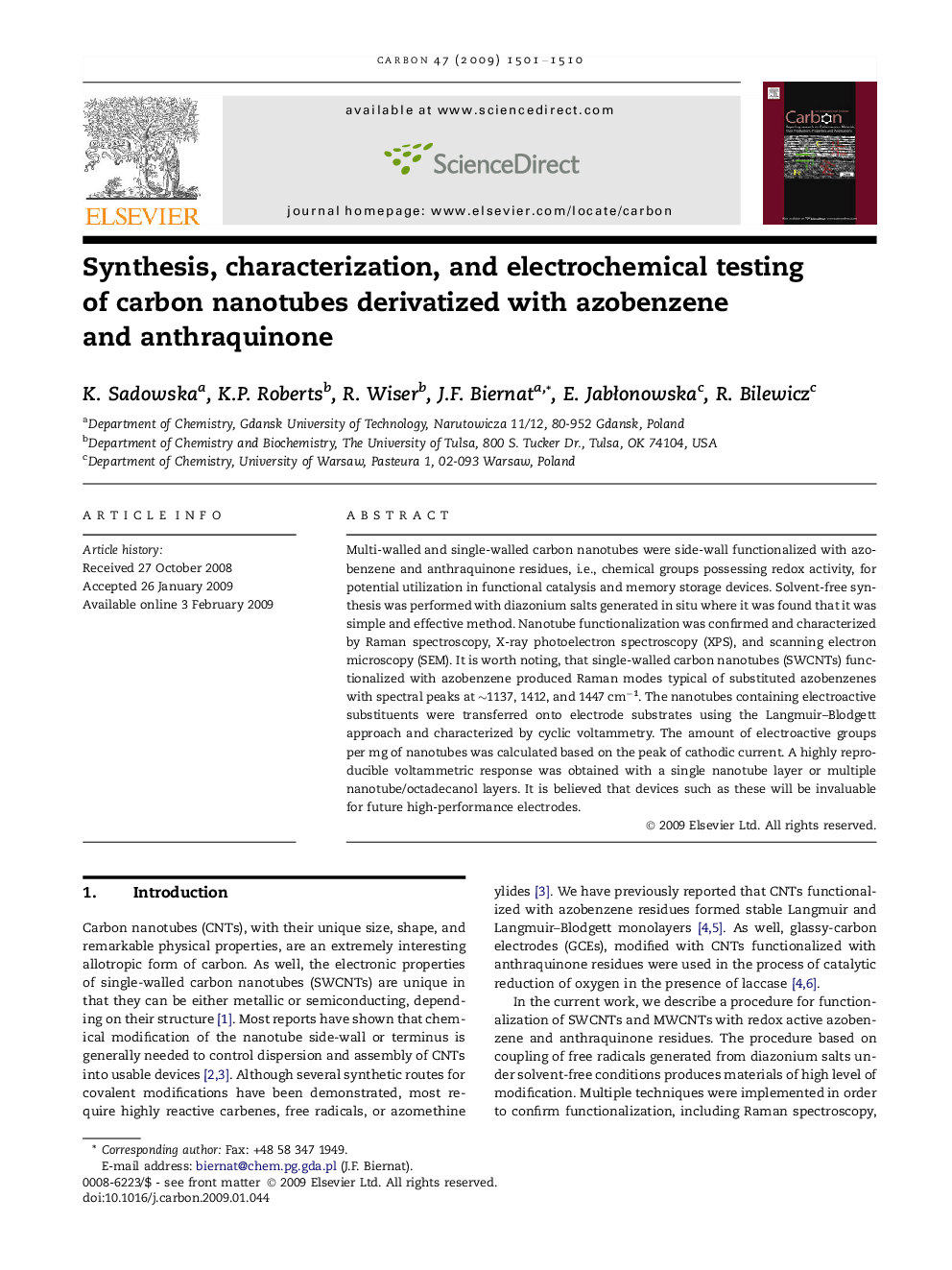| کد مقاله | کد نشریه | سال انتشار | مقاله انگلیسی | نسخه تمام متن |
|---|---|---|---|---|
| 1418017 | 985987 | 2009 | 10 صفحه PDF | دانلود رایگان |

Multi-walled and single-walled carbon nanotubes were side-wall functionalized with azobenzene and anthraquinone residues, i.e., chemical groups possessing redox activity, for potential utilization in functional catalysis and memory storage devices. Solvent-free synthesis was performed with diazonium salts generated in situ where it was found that it was simple and effective method. Nanotube functionalization was confirmed and characterized by Raman spectroscopy, X-ray photoelectron spectroscopy (XPS), and scanning electron microscopy (SEM). It is worth noting, that single-walled carbon nanotubes (SWCNTs) functionalized with azobenzene produced Raman modes typical of substituted azobenzenes with spectral peaks at ∼1137, 1412, and 1447 cm−1. The nanotubes containing electroactive substituents were transferred onto electrode substrates using the Langmuir–Blodgett approach and characterized by cyclic voltammetry. The amount of electroactive groups per mg of nanotubes was calculated based on the peak of cathodic current. A highly reproducible voltammetric response was obtained with a single nanotube layer or multiple nanotube/octadecanol layers. It is believed that devices such as these will be invaluable for future high-performance electrodes.
Journal: Carbon - Volume 47, Issue 6, May 2009, Pages 1501–1510